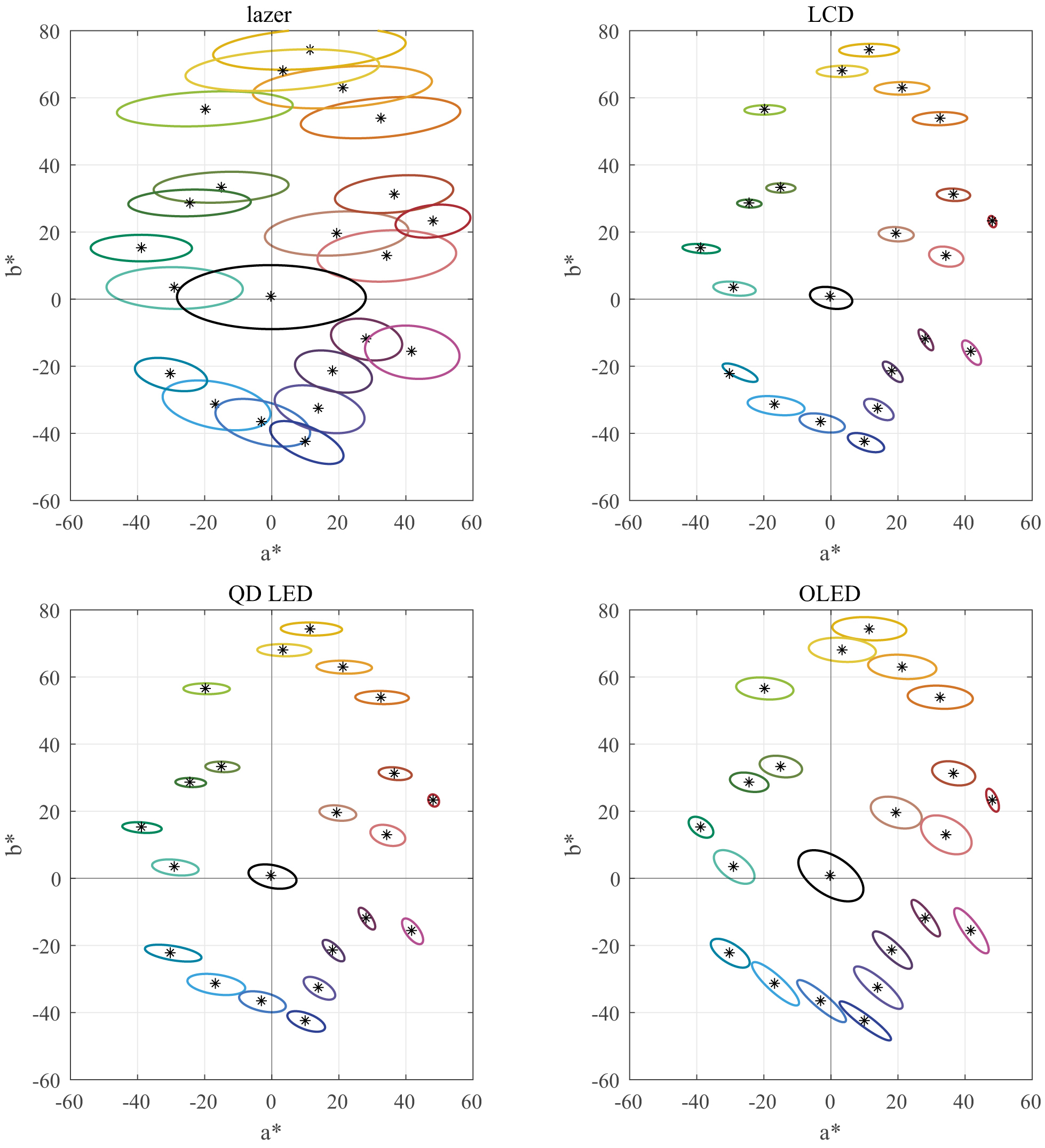
When two colors are presented under identical viewing conditions, they may appear the same to one observer but different to another, a phenomenon known as observer metamerism (OM). This effect is caused by individual differences in their color matching functions (CMFs). To achieve accurate color reproduction between displays, it is essential to minimize OM. This study first investigated OM between four displays in cross-media reproduction through computer simulations. Next, the relationship between metamerism in the displays and the RGB peak wavelengths was examined. The simulations were also used to explain the effects of individual variation on the orientation of OM ellipses in displays, from the perspective of human visual physiological parameters. The analytical approach developed in this study provides a valuable framework for predicting OM across different display technologies.

With the rapid development of display technology, the colour mismatch of the colours having same tristimulus values between devices is an urgent problem to be solved. This is related to the wellknown problem of observer metamerism, caused by the spectral power distribution (SPD) of primaries and the difference between individual observers' and the standard CIE colour matching functions. An experiment was carried out for 20 observers to perform colour matching of colour stimuli with a field-of-view of 4° between 5 displays, including two LCD and two OLED, against a reference LCD display. The results were used to derive a matrixbased colour correction method. The method was derived from colorimetric visually matched colorimetric data. Furthermore, different colour matching functions were evaluated to predict the degree of observer metamerism. The results showed that the correction method gave satisfactory results. Finally, it was found that the use of 2006 2° colour matching function outperformed 1931 2° CMFs with a large margin, most marked between an OLED and an LCD display.